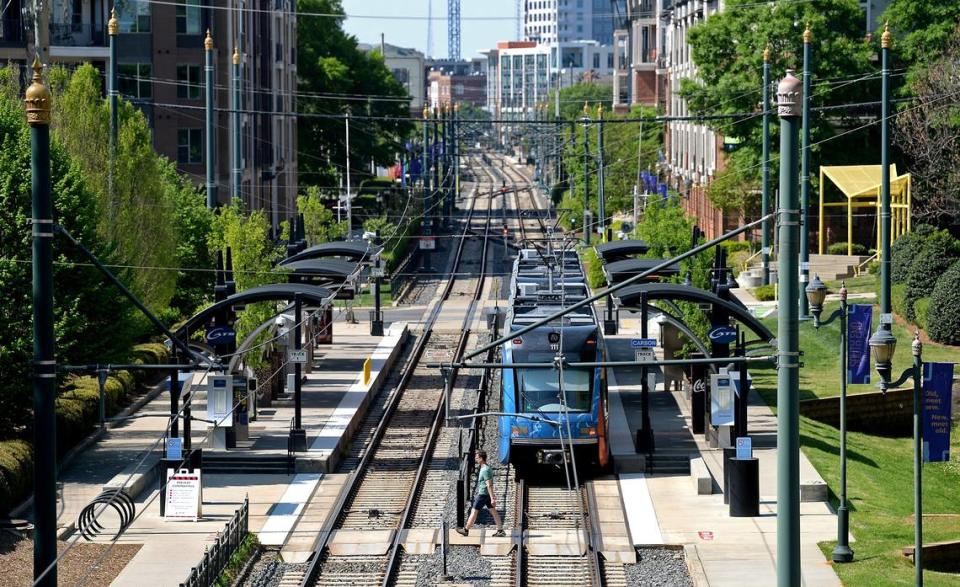Entire Charlotte light rail fleet to be repaired following 2022 Blue Line derailment
Charlotte’s entire light rail fleet must be repaired to fix a part defect that was found after a train derailment in May 2022.
The Charlotte City Council found out about the derailment and faulty equipment Monday night, nearly one year after the derailment occurred.
Brent Cagle, interim Charlotte Area Transit System CEO, said he found out about the derailment two weeks ago, several months after assuming his interim executive role, when the North Carolina Department of Transportation asked for a corrective action plan.
The faulty part is a bearing that bears friction on each axle. On the derailed train, a seal broke on a bearing, allowing water and corrosion in to ultimately stop the axle from turning.
Each train car has six bearings and the city owns 42 cars. To fix the issue, Cagle said CATS is working with rail company Siemens Mobility to expedite repairs on each train, which is expected to take several years.
A cost estimate was not provided Monday. The Charlotte City Council is expected to find out how much repairs will cost at the April 10 business meeting. Then, members will vote to amend the city’s contract with Siemens to get repairs started. The city will be responsible for funding the repairs because the bearings are out of warranty.
When asked if the light rail is safe to use, Cagle said, “We are certain that we have mitigating measures in place and we feel that in the vehicles that are running we can catch the bearing issue before it becomes a catastrophic failure.”
Maximum train speeds have been reduced from 55 to 35 miles per hour, he said.

CATS fleet issue goes beyond trains
The news came with a report presented by Cagle and Assistant City Manager Liz Babson from Management Partners consulting company. The city manager’s office asked the company to review Charlotte’s transit agency in summer 2022.
A priority for the transit agency moving forward is replacing those trains and buses. About 90 buses, or 30% of the city’s 300 buses, are beyond their useful life and need to be replaced, Cagle said.
Replacing buses quickly will have to balance with the city’s expensive environmental goal to go electric.
“We need to buy buses now but also looking at how we transition from traditional fuels or hybrids into full electrics,” Cagle said.
CATS in flux
The evaluation presented to council members Monday follows a tumultuous year for the transit agency, which has ambitious plans for expansion.
In November, John Lewis resigned as CEO after a year of staffing shortages, declining ridership, violence on buses and reduced ride frequency. Last week, WBTV reported CATS Chief Operating Officer Allen Smith was placed on administrative leave with no pay.
Bus drivers represented by SMART Union in February approved a contract with their management company, RATP Dev USA, avoiding a strike.
In an effort to quell transit woes, CATS is expected to accept proposals for a different company to manage its bus system, replacing RATP Dev USA. But the city hasn’t yet started soliciting proposals, according to a listing on its website.
While the transit agency took back-to-back blows, plans for growth still moved forward.
The design process for a new uptown transit center is underway. The new building is expected to be completed by 2028, moving the bus facility underground.
Initial renderings show six levels of parking above the underground transit center and retail on the street level. The Charlotte Hornets would have space with two full-sized practice courts above the parking levels. Residential and commercial space would build on top of that.
Charlotte City Council members met with local legislators Friday in part to lobby for an increased sales tax to fund CATS’ expansion, which includes an east-west rail line, too.

